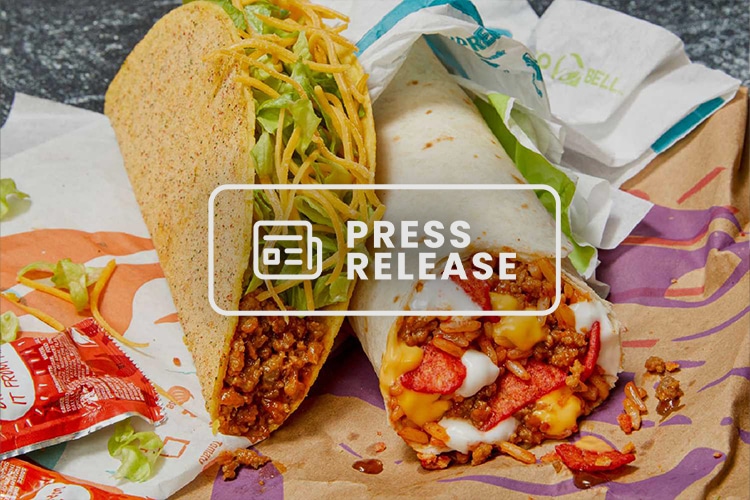This article originally appeared in FSR.
NOW IS THE TIME TO TAKE STEPS TO BOOST YOUR REVENUES WHILE REDUCING PRIME COST.
The restaurant industry and economy are being buffeted by waves of uncertainty on everything from wholesale prices to labor costs to consumer spending patterns.
Fortunately, there are many strategies that owners and operators can implement in the coming weeks and months to continue to produce profit and grow in any market.
Now is the time to take steps to boost your revenues while reducing prime cost. Proactively preparing your business will pay dividends in the near and long-term by providing a cushion against any unforeseen challenges. Try these seven tips to prepare your restaurant for growth—no matter what challenges may lie ahead.
1. Set the groundwork
The pandemic led to a boom in delivery and takeaway service, and while numbers from those channels aren’t what they once were, they’re still higher than historical averages. Consulting firm Frost & Sullivan estimates that the food delivery industry will be worth $200 billion by 2025, up from the $82 billion it estimated in 2018.
Just as they did during the pandemic, growth-minded operators should continue to embrace new ways to give customers what they want: namely, make it easier for them to spend money. The less friction, the more likely they’ll continue to frequent your place even in tighter times. Prepare now to be able to provide less expensive options when money is restricted.
2. Compare budgets and forecasts
Are you comparing your 2022 forecast to budget numbers? Have you started forecasting and goal setting for 2023? If the answer is anything other than “yes,” now is the time to start.
While much of the focus in a restaurant tends to revolve around the products and processes that provide guests with food and experiences, budgets and forecasts are the supporting foundation that ensures everything is moving in a positive direction.
They are the path to expanding margins, rising profits, better guest experiences, and growth. Don’t just take last year’s budget and repeat; instead, use data from multiple past years’ actuals along with your forecast for shifts in 2023 to produce the most accurate plan possible.
3. Lock in your labor strategy
Labor has long been one of foodservice’s most intensely debated, monitored, and managed areas. Labor cost is the largest expense alongside food. The restaurant labor market shifted dramatically after the pandemic and forced many businesses to close temporarily due to lack of staffing.
It’s essential to set up processes to attract, train, and retain the best staff. Simultaneously, you should be keeping an eye on real-time insights of your labor costs to empower cost control and get the most out of your team. Scheduling employees based on an accurate sales forecast is also essential.
4. Double down on inventory
Don’t wait for an emergency. Start training your entire team on regular inventory cadence and processes, set expectations, and communicate the importance of inventory to the big picture. The more you count inventory, the better your data for ordering and making other food-related decisions.
Consistent, manual counts on the same day of the week at the same time can generate helpful, comparable numbers. If you’re looking to get more granular data, consider a regular “micro-inventory” of the top 20 products you use. Again, for most restaurants, 80 percent of their food cost is tied up in their top 20 ingredients; knowing their shifting prices can go a long way in helping you reduce cost of goods sold and boost your margins.
5. Track costs across the board
Your theoretical food cost is what your food expenses should be given the price of ingredients and assuming perfect usage. Your actual food cost is how much you spent for the same period, accounting for issues like food waste, improper portioning, and invoice mistakes.
Comparing these two food costs reveals where you may have unnecessary food waste. Start by examining the items with the widest variance between actual and theoretical cost to find the root issue. From there, set variance goals for your entire restaurant business or by individual inventory items or categories.
As inventory cycles through your restaurant, it generates a lot of accounting data. The more you review your costs of goods sold, the faster you can spot trends in your food spend. Whether tracking how cost spikes at various parts of the week or what to purchase for your next order, up-to-date information can influence almost every decision you make about your food spend.
6. Negotiate now
Whether or not more challenging economic times lie ahead, you should constantly negotiate and renegotiate prices with your suppliers. For example, when chicken costs surged earlier this year, operators with locked-in pricing were able to avoid the spike and continue providing their popular dishes without having to pass these costs onto their guests.
Accomplishing this now could prove particularly useful in smoothing out any long-term price fluctuations that could arise due to recent regional droughts and fires. With the possibility of rising costs for beef, corn, tomatoes, and more, now is the time to negotiate your pricing.
7. Record waste live
Given how busy restaurant kitchens can be, managers may not notice what’s contributing to food waste. Using a tool like a food waste log can help your managers record sources of waste at the time it happens for analysis later.
Consider creating a form that captures the important facts of food waste, noting who, what, how, and why. The log can be a simple spreadsheet hanging on a kitchen clipboard, or it can be a digital document staff access on a mobile phone. While food waste is inevitable in a restaurant, tracking it in the moment helps spot recurring sources of waste. You and your managers can then develop a strategy to address the root causes.
Conclusion
No one truly knows what the future holds. As analysts and economists work to provide their best data-driven predictions of what might come, restaurant owners and operators must be ready for anything. Whether the possibility of a recession becomes reality is less important than the steps leaders take in the coming days, weeks, and months to strengthen their business from top-to-bottom.



